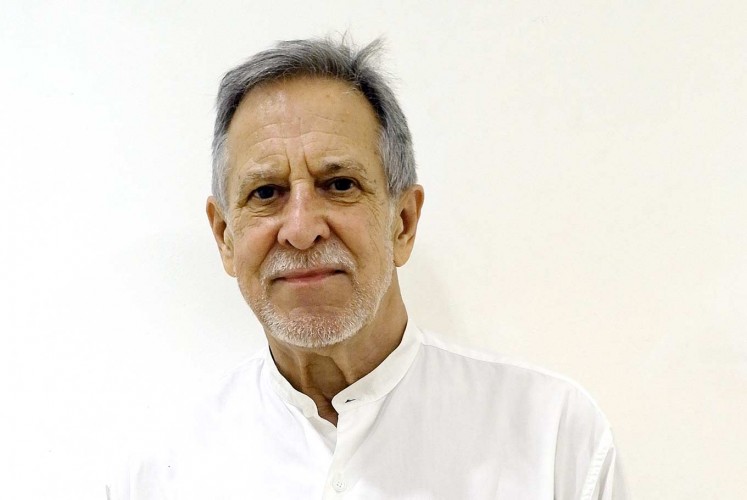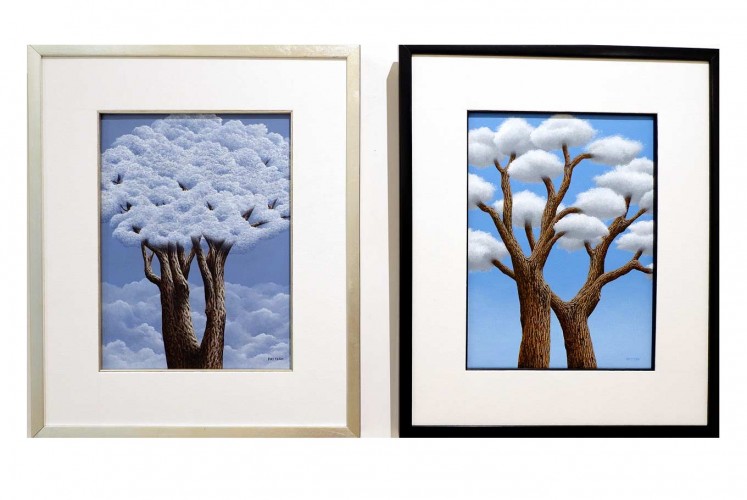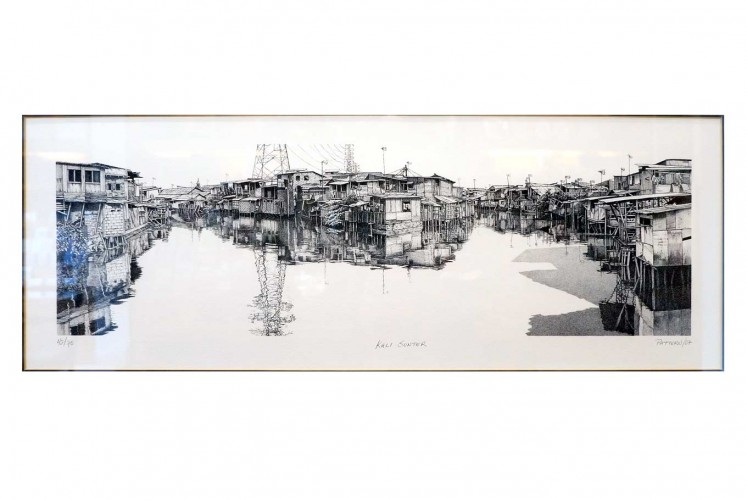Popular Reads
Top Results
Can't find what you're looking for?
View all search resultsPopular Reads
Top Results
Can't find what you're looking for?
View all search resultsKen Pattern: A tribute to tree of life
Canadian artist Ken Pattern witnessed how Jakarta transformed into a metropolitan city bursting with shopping malls and high-rise buildings.
Change text size
Gift Premium Articles
to Anyone
H
aving lived in Indonesia since 1989, Canadian artist Ken Pattern witnessed how Jakarta transformed into a metropolitan city bursting with shopping malls and high-rise buildings.
He is not pleased with the change, confessing that he missed the old Jakarta.
“Everybody thinks new is better than old, but I don’t think so,” he said.
Being an environmentalist himself, Pattern raised concerns over projects that harm the environment, but are justified as efforts to develop the Indonesian economy, like the clearing of forests in Sumatra and Kalimantan to make way for oil palm plantations.
In response, the artist is honoring tress in the way he knows best: through his works currently on display in a solo exhibition titled, “A World of Trees,” which runs until Dec. 31 at gallery Hadiprana in Kemang, South Jakarta.
Opened by Canadian Ambassador to Indonesia Peter MacArthur, the exhibition displays over 50 paintings, most of which depict pieces of tree bark from banyan, Brazilian Ironwood, Arbutus to damar trees.
Having lived in Indonesia since 1989, Canadian artist Ken Pattern witnessed how Jakarta transformed into a metropolitan city bursting with shopping malls and high-rise buildings. (JP/A. Kurniawan Ulung)The ambassador praised the exhibition, saying that it provided visitors the opportunity to rediscover and reconnect with Canada’s greenery, as well as to reflect on the global impact of climate change on forests.
“Growing up on the west coast of Canada, I became aware of the significance of trees from an early age. From the time I began to draw and paint, my work has been influenced by these magnificent specimens,” Pattern said.
He added that the banyan was especially unique, because the tree grows in a sprawling fashion, with limbs that cascades down to the roots.
The idea to paint the banyan’s bark came to him as he was observing banyan trees located in the Monkey Forest in Ubud, Bali, and Angkor Wat in Cambodia.
“In Bali, the Banyan trees have spiritual meanings. People honor them, so they combine temples with the trees,” Pattern said.
In Cambodia, Pattern was fascinated by banyan trees overgrowing Angkor Wat to protect the temple.
“If you take down the trees, the temple will fall down. Nature and man-made creation work in harmony,”
he explained.
Meanwhile, inspiration to paint Brazilian Ironwoods came to him when he saw them in a botanical garden in Singapore.
“The Brazilian Ironwood tree is remarkable for its designs and colors, with its skin-like bark,” he said, adding that when shedding, Brazilian Ironwoods were like abstract paintings, revealing new designs and colors in the process.
The damar trees in his paintings were inspired by the ones he saw at Leuser National Park in North Sumatra.
Cloud Tree I and Cloud Tree II (JP/A. Kurniawan Ulung)According to Greenpeace, 80 percent of the world’s forests have been destroyed. Ancient forests are looted every day to supply cheap timber and wood products around the world.
This results in climate change, biodiversity loss and community displacement. Indonesia itself has lost
72 percent of its ancient forests.
At the exhibition, Pattern, known as a stone lithography artist, also showcases a series of his lithographs about Indonesian and Canadian landscapes. Through these works, he wants to introduce the west coast of British Columbia, where he grew up, to beautiful places he visited in Indonesia, such as Bali, Bukittinggi in West Sumatra and Flores in East Nusa Tenggara (NTT).
“I want to go to the Banda Islands in Maluku because they are historically interesting; they are part of the Spice Islands,” he said.
Pattern, who has held 57 solo and group exhibitions in Canada and all over the world since 1978, fell in love with drawing at a young age.
“I like to do realism and surrealism,” he said.
After graduating from high school in 1961, he honed his drawing skills at Emily Carr University of Art and Design in Vancouver, majoring in printmaking with lithography as his specialization.
“My favorite is pencil drawings. If you have a good drawing ability, lithography is a good choice for you,” he said.
At the ongoing exhibition, Pattern also displays his drawings depicting kampung sceneries, featuring warung (road-side shop) as well as jamu (herbal medicine), satay and meatball sellers with their carts.
The kampung is another one of Pattern’s favorite drawing subjects, saying that they truly represent Indonesia.
Kali Sunter (Sunter River) (JP/A. Kurniawan Ulung)As such, Pattern said he was not impressed by the emergence of malls and shopping centers across the country.
“If I go to the malls in Jakarta, they are similar to the malls in Paris or Berlin or Buenos Aires,” he said. “What I like to see is the traditional side of Indonesia —which defines Indonesia.”
In other countries, he said, people went to supermarkets for shopping. However, in the kampung, residents did not need to go to supermarkets because vegetable vendors would pass their houses.
“In Indonesia, the supermarket comes to you. You cannot find that in my country,” he said.
For Pattern, drawing the kampung is his way of documenting traditional elements of Indonesia, because he understands that as Jakarta becomes more modern, sooner or later, the kampung will disappear.
“In condominiums, you don’t have relationship with people. But, in the kampung, the sense of community is very strong. In the kampung, everybody is communicating, socializing and sharing their lives,” he pointed out.
He noticed that in Jakarta, he can no longer find a warung in some streets because these road-side shops cannot compete with mushrooming convenience stores.
“When I first came to Indonesia, a [residential] complex along Jl. Rasuna Said [South Jakarta] was a farming area. Now, it is like a huge, modern city; [everything is] made from glass and steel.”
Through his exhibition, Pattern wants visitors to be more respectful to trees because they turn carbon dioxide into oxygen, crucial for living things, while at the same time, protect people from the impact of land erosion.
“The trees can survive without us, but we cannot live without them.”














